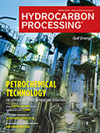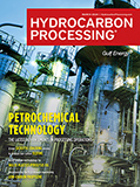Pumps
Tank side-entry jet mixer design, arrangement and applications
Side entry mixers, or jet mixers, are commonly used to achieve mixing in storage tanks and reactors. Impellers are another conventional device used for mixing in industry, but they are expensive for large storage tanks and underground tanks, so jet mixers have proven to be a better alternative.
ITT to provide highly engineered pump systems and aftermarket services
ITT Inc. announced the company has signed a three-year agreement for the supply of API-610 centrifugal pump systems and related products and engineered services to ExxonMobil, one of the world’s largest international energy and petrochemical companies.
Case study: Forced-circulation evaporator piping design
Evaporation and crystallization techniques have many applications in the chemical, fertilizer, metallurgical, chlor-alkali, pigment and dye, food, ash treatment and zero-liquid discharge process industries, among others.
Innovations
Endress+Hauser’s newly developed iTEMP TMT31 temperature transmitter for analog 4-20mA signals is characterized by its long-term stability, high accuracy and ease of use for reliable temperature measurement.
Implement innovative corrosion management solutions for biofuel refining—Part 2
The production of carbon-neutral and renewable transportation fuels is growing rapidly, driven by the need to find feedstocks beyond fossil resources. Environmental, social and governance (ESG) initiatives—along with accelerated consumer demand for sustainable and carbon-negative fuel products—are also driving demand.
Energy comparison for heat pump and bottom flashing schemes for C3 hydrocarbon system
Propane-propylene splitters are present in significant numbers across petrochemical complex units, such as ethylene crackers and propane dehydrogenation units.
Innovations
The automation experts at ATC Diversified Electronics, maker of devices for automation, motor protection, process monitoring and power quality, have introduced the new MPA2 motor protection analyzer.
Select the appropriate construction materials for valves and accessories
In refineries and petrochemical plants, valves and related components often come into contact with process media.
CPC limits oil intake due to power outage in Kazakhstan
The Caspian Pipeline Consortium has stopped three pumping stations in western Kazakhstan because of a power outage in the region, the CPC said.
Calculate realistic control valve pressure drop by rules-of-thumb method
Pressure drop is defined as the difference in pressure between two points of a fluid-carrying network.

- WestJet buys first Canadian-supplied SAF by Shell Aviation 4/23
- Technip Energies selected by Viridor to perform FEED on the Runcorn energy-from-waste carbon capture project in the UK 4/23
- SINOPEC completes its involvement in Kazakhstan's polyethylene project 4/23
- Neste premieres at Chinaplas: showcasing possibilities of bio-based and recycled materials for plastics 4/23
- Russia's oil refining near 11-month low 4/23
- Haiti fuel terminal operations halted as gangs seize trucks 4/23




